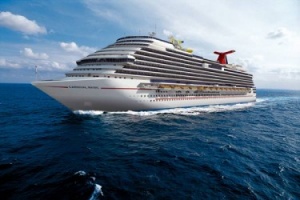Cruise industry continues to battle unfavorable tides

There’s an old saying that one bad apple can spoil the whole bunch. While it may not be applicable across all industries in practice, from a perceptual standpoint a single brand’s negative publicity can often have repercussions for its industry competitors as well. Such has been the case with the cruise industry, which has been embattled over the past year by brand-specific crises which appear to have impacted perceptions across many industry mainstays.
Following the Carnival Triumph’s struggle to shore in February 2013, perceptual measures suffered – not just for Carnival, but across seven leading cruise brands – and continued to dip through May. A recovery appeared to be underway more recently, with perceptions trending upwards in January 2014. However, norovirus reports aboard several cruise line ships in February 2014 seem to have effectively stolen the wind from the industry’s collective sails, with consumer perceptions of these top brands now dropping again.
These are some of the results of The Harris Poll® of 2,059 U.S. adults surveyed online between February 10 and 14, 2014 (following norovirus incidents on Princess Cruise Lines’ Caribbean Princess, the Royal Caribbean Explorer of the Seas and the Norwegian Star). Results are compared, where applicable, to Harris Poll EquiTrend® data collected from January 3 to 24, 2014. (Full results, including data tables, available here)
Perceptions flow with the tide
Looking at these seven industry mainstays in aggregate, Quality, Trust and Purchase Intent scores were all still down significantly before the recent norovirus incidents, when compared to the state of these brands prior to the Triumph debacle. With all three measures dropping further still in the wake of the reported outbreaks, this leaves the average perceived Quality score down by 11% vs. its pre Triumph level, with Trust down by 12% and Purchase Intent down by 13%.
As with the Triumph incident, the impact of this more recent series of issues has not been limited to the cruise brands involved firsthand with the incidents. All seven brands declined from before to after the norovirus incidents in at least one of the measures, and most were down from pre-Triumph levels to begin with.
ADVERTISEMENT
“We’ve all heard the saying that a rising tide lifts all boats,” says Deana Percassi, Vice President and Public Relations Research Consultant with Nielsen, “but the inverse also holds true. In a field as crowded as the cruise industry, bad press for a small handful of brands – or even a single one – can have negative repercussions for major players across the board.”
Air travel perceptions remain above sea level
Americans continue to profess more favorable attitudes toward air travel than toward cruises, with roughly six in ten (59%) agreeing that air travel is much more reliable than taking cruises and a majority (54%) agreeing that air travel is much safer than taking cruises.
A majority of Americans (54%) also agree that they’re less likely to take a cruise now than they were a year ago, with this sentiment proving stronger among those who have never taken a cruise (58%) than among those who have (44%).
One-third of Americans (32%) agree that cruises are “worry-free,” with past cruise experience again playing a role in agreement with this perception: those who have taken a cruise (50%) are more than twice as likely to agree that cruises are “worry free” as those who have not (23%).

